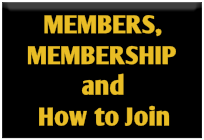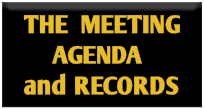|
|
AAAAAAAAAAAAAAAAAAAAAAAAAAAAAAAAAAAAAAAAAAAAAAAAAAAAAAAAAAAAAAAAAAAAAAAAAAAAAAAAAAAAAAAA

|
Starting
a QSO via a directed
call
There
are two main ways by
which a QSO can begin,
one is via a directed
call and one is via
monitoring. A directed
call is where one
amateur calls another
amateur individually,
such as "N8XYZ from
K8ABC". In such a case,
K8ABC is looking for one
particular individual,
N8XYZ. It generally
is not an
invitation for anyone
other than N8XYZ to
return the call. If
N8XYZ doesn't answer the
call, K8ABC may just
clear off by saying
"K8ABC clear", or may
clear and listen for
other calls by saying
"K8ABC clear and
listening". The "and
listening" or "and
monitoring" implies they
are interested in
hanging around to QSO
with anyone else who
might be listening at
that time. "Listening"
and "monitoring" don't
mean you are listening
to somebody else's
conversation, they mean
you are listening for
other people who may
want to call you to
start a new QSO.
Likewise, just saying
your call by itself with
nothing following it is
meaningless. If you were
to say "N8XYZ", people
listening wouldn't know
if that means you were
monitoring for calls,
whether you were
testing, or whether they
missed the callsign of a
party you were calling.
Be concise, but be
complete.
Starting
a QSO via a monitoring call
If
the repeater is not in
use, simply stating your
callsign followed by
"listening" or
"monitoring" implies
that you are listening
to the repeater and are
interested in having a
QSO with anyone else.
Calling CQ on a repeater
is generally not a good
idea, a simple "N8XYZ
listening" will suffice.
There is no need to
repeat the "listening"
message over and over
again as you might do
when calling CQ on HF.
Once every few minutes
should be more than
sufficient, and if
someone hasn't answered
after a few tries, it
probably means there is
nobody around. If
someone is listening and
wants to talk with you,
they will answer back.
Avoid things like "is
anybody out there" or
"is there anybody around
on frequency"; it sounds
like a bad sci-fi movie.
Joining
a QSO in progress
If
there is a conversation
taking place which you
would like to join,
simply state your
callsign when one user
unkeys. This is the
reason for having a
courtesy tone: to allow
other users to break
into the conversation.
One of the stations in
QSO, usually the station
that was about to begin
his transmission, will
invite you to join,
either before making his
own transmission or
afterwards. Don't
interrupt a QSO unless
you have something to
add to the topic at
hand. Interrupting a
conversion is no more
polite on a repeater
than it is in person.
Interrupting
a QSO to make a call
If
you need to make a
directed call to another
amateur but there is
already another QSO
going on, break into the
conversation during the
courtesy tone interval
by saying "Call please,
N8XYZ". One of the
stations will allow you
to make your call. If
the station you are
calling returns your
call, you should quickly
pass traffic to them and
relinquish the frequency
to the stations who were
already in QSO; don't
get into a full QSO in
the middle of someone
else's conversation. If
you need to speak with
the party you call for a
significant length of
time (say, more than 15
seconds), ask them to
either wait until the
current QSO has cleared,
or ask them to move to
another repeater or
simplex channel to
continue the
conversation.
Roundtables
and "Turning it Over"
When
more than two amateurs
are in a QSO, it is
often referred to as a
"roundtable" discussion
or rag-chew. Such a
QSO's usually go in
order from amateur A to
amateur B to amateur C
... and eventually back
to amateur A again to
complete the roundtable.
To keep everyone on the
same page, when any one
amateur is done making a
transmission, they "turn
it over" to the next
station in sequence (or
out of sequence, if so
desired). Without
turning it over to a
particular station when
there are multiple
stations in the QSO,
nobody knows who is
supposed to go next, and
there ends up either
being dead silence or
several stations talking
at once. At the end of a
transmission, turn it
over to the next station
by naming them or giving
their callsign, such as
"...and that's that. Go
ahead Ray." or "....and
that's that. Go ahead
XYZ." If it's been close
to 10 minutes, it's a
good time to identify at
the same time as well,
such as "...and that's
that. N8XYZ, go ahead
Ray."
IDing
and Who's Who?
By
FCC regulations, you
must always identify at
10 minute intervals, or
less, and at the end of
a transmission. If you
are making a test
transmission or calling
another party, this is a
one-way transmission.
Since it has no "length"
as there is no QSO
taking place, you should
identify each time you
make a call or a test
transmission. When
identifying yourself and
another party (or
parties), or when making
a directed call, your
callsign goes LAST.
"N8XYZ, K8ABC" means
that K8ABC is calling
N8XYZ, not the other way
around. There is no need
to identify each time
you make a transmission,
only once every 10
minutes or less. You do
not need to identify the
station with whom you
are speaking, only your
own callsign, but it is
generally polite to
remember the call of the
other station. Avoid
phonetics on FM unless
there is a reason for
using them, such as the
other station
misunderstanding your
callsign. When phonetics
are needed, stick to the
standard phonetic
alphabet.
Demonstrations
From
time to time, an amateur
may want to demonstrate
the capabilities of
amateur radio to another
non-amateur. The typical
way to do this is to ask
for a "demo" such as
"N8XYZ for a
demonstration." Anyone
who is listening to the
repeater can answer them
back. Usually telling
the calling party your
name, callsign, and
location is what they
are looking for, not a
lengthy conversation.
Someone doing a demo may
ask for stations in a
particular area to show
the range of amateur
radio communications,
such as if the calling
station is in the Garden
Grounds, near Mount
Hope, they may ask for
any stations in Beckley
or Fayetteville or Hico
areas, which is more
interesting than
demonstrating that they
can talk to someone in
the same town as they
are in.
Signal
Reports
If
you are unsure how well
you are making it into
the repeater, DO NOT
kerchunk the repeater.
Any time you key up the
repeater, you must
identify, even if you
are just testing to see
if you are making the
machine. "N8XYZ test" is
sufficient. Do not use
the repeater as a
"target" for tuning or
aiming antennas,
checking your
transmitter power, etc.
Use a dummy load where
appropriate, or test on
a simplex frequency. If
you need someone to
verify that you are
making the repeater, OK,
ask for a signal report
such as "N8XYZ, can
someone give me a signal
report?" "Radio check"
is a term most often
used on the CB,
"signal report" is what
most amateurs ask for.
Language
Aside
from some of the
techno-syncracies
inherent in amateur
vernacular, use plain
conversational American
language. The kind of
American language that
would be suitable for
children's television,
not PG or R rated
movies. Avoid starting
or encouraging conflicts
on the air. If a topic
of conversation starts
to draw strong debate,
change the subject.
Avoid "radio-ese" lingo
whenever possible. CB
has its own language
style and so does
amateur radio, but the
two are not the same.
Amateurs have "names",
not "personals" or
"Handles". Although many
new hams have graduated
from the CB
ranks, let's try to keep
CB lingo off the
amateur bands. When
visiting a new repeater,
take some time to
monitor before jumping
in to get a feel for the
type of traffic and
operating mannerisms of
that particular system.
Some repeaters are very
free-wheeling in that
there are people jumping
in and out of
conversations
constantly. Others
primarily have directed
calls on them and
discourage rag-chewing.
Others are
member-exclusive
repeaters,
unfortunately. Listen
before you talk, when in
West Virginia do as the
West Virginians do.
Malicious
Interference
If
there is malicious
interference, such as
kerchunking,
touch-tones, rude
comments, etc. DO
NOT ACKNOWLEDGE IT!
Continue the QSO in a
normal fashion. If the
interference gets to the
level where it is
impossible to carry on
the QSO, simply end the
QSO as you normally
would, or, move to
another repeater.
Power
Use
the minimum power
necessary to complete a
QSO. However, the
minimum power necessary
doesn't just mean you
are barely tickling the
repeater receiver
squelch. If someone says
that you are noisy,
increase power or
relocate or take
whatever measures you
can to improve your
signal. Continuing to
make transmissions after
being told your signal
is noisy is
inconsiderate to those
listening. The amateur
radio manufacturers
continue to come up with
newer, smaller handheld
radios, many with power
levels well under a
watt. Many new amateurs
start out with a
handheld radio as their
"first rig". Although
convenient, they aren't
the most effective
radios in terms of
performance. Without a
good external antenna,
operating a handheld
radio indoors or inside
a car is going to result
in a lot of bad signal
reports.
EMERGENCIES
If
there is a QSO going on,
break into a conversation
with the word "Break" or
"Break for priority
traffic." DO
NOT USE THE WORD BREAK
TO JOIN IN A QSO UNLESS
THERE IS AN EMERGENCY!
All stations should give
immediate priority any
station with emergency
traffic.
|

|
|
|
|
|
|
|
|
|
|
|






